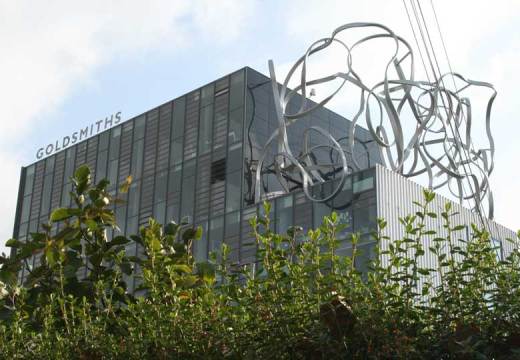From the February issue of Apollo: preview and subscribe here
From old London Bridge to the Ponte Vecchio, bridges have often owed their architectural interest to unorthodox secondary functions. But the proposed Garden Bridge over the Thames is impractical as a park and misguided as a river crossing.
When Antonio Canova visited London in 1815, he reported that the new Strand Bridge across the Thames, then nearing completion, was ‘the noblest bridge in the world, worth a visit from the remotest corners of the earth’. The bridge had been promoted by a public company and was designed by John Rennie. Built of granite, with nine elliptical arches and pairs of tough Greek Doric columns buttressing the piers, it was certainly a noble structure and by the time it was opened by the Prince Regent on the second anniversary of the Battle of Waterloo it had been renamed after that great victory. But this Waterloo Bridge has gone, replaced in the 1930s by the London County Council after much controversy. It seems typical of the way things are done in London that so beautiful a bridge should have been demolished, while the Hungerford Bridge carrying the railway into Charing Cross is still there, despite it being regarded as hideous and offensive ever since it was opened in 1864 (although Claude Monet found it a worthy subject in the London fog).

Old Waterloo Bridge, London, designed by John Rennie and opened in 1817. Photo: Sims & Co., c. 1925–34
For the first four decades of the 20th century, architects and planners endlessly debated what to do about the Hungerford Bridge. Innumerable schemes were produced to draw the railway back to Waterloo and replace the iron lattice girder structure with a fine new bridge from a replanned South Bank to Trafalgar Square. Had a Charing Cross Road Bridge been built, old Waterloo Bridge might have been spared, but despite all the reports and endearing perspective drawings nothing was done. The manifest inadequacy of the Hungerford Bridge as a pedestrian crossing was only solved by the addition of the admirable flanking cable-stayed bridges designed by Lifschutz Davidson Sandilands and completed in 2002.
With this in mind, it seems extraordinary that the scheme for a new and unconventional pedestrian crossing should have been granted planning permission by both Westminster and Lambeth Councils in just a couple of years and after little public debate. This is the proposed Garden Bridge, which will run from Temple to the South Bank between Waterloo and Blackfriars Bridges. Costing some £175 million and designed by the Heatherwick Studio with Arup and garden designer Dan Pearson, its copper-clad structure will fan out from just two piers in the Thames.
Good bridges are dynamic as they connect two sides of a river and are intended for movement, but this Garden Bridge is conceived as a sort of park for people to linger in. The least satisfactory part of the design is that it fails properly to engage with either bank of the Thames; it is suspended in the air at each end, with stairs and a lift shaft for access coming down on top of Temple underground station on the north side and on top of a new building on the southern embankment.
This very expensive but not very elegant bridge, described by its promoter Joanna Lumley as being ‘like a tiara on the head of our fabulous city’, is really no more than a tourist attraction. Yet £60 million of public money has already been promised towards it at a time of cuts and austerity. Perhaps this is because the idea came from a glamorous actress and is supported by a flamboyant and ambitious Mayor of London, while Thomas Heatherwick has a deserved reputation as an imaginative designer (his new London double-decker bus is terrific).
But this money would surely be better spent on a new bridge that is actually needed in London, such as the proposed pedestrian crossing from Nine Elms to Pimlico between Vauxhall and Chelsea Bridges, for which a competition has recently been announced by Wandsworth Council. Furthermore, Westminster planners considered that ‘there can be little doubt that the garden bridge will cause significant harm to established views of importance’, namely those of St Paul’s Cathedral, especially as trees are intended to rise from the wider areas over the piers (surely improbably in windswept mid-river). Westminster also insists that the bridge remains free, although it may be closed at times for private functions to generate income towards the estimated annual £3.5 million maintenance cost. And if the Garden Bridge Trust should fail, maintenance will become the responsibility of Transport for London, i.e. the taxpayer. The precedents are not auspicious: the tolls on old Waterloo Bridge never generated enough to recoup the huge building costs and in 1877 the Metropolitan Board of Works bought the bridge to open it free of toll.
All this said, the idea of an unorthodox river crossing remains appealing. There are bridges that thrillingly combine road and rail, such as those taking the Métro across the Seine in Paris and the amazing gothic Oberbaumbrücke for the U-Bahn crossing the Spree in Berlin. The principal example is Robert Stephenson’s High Level Bridge in Newcastle, which opened in 1850 and is one of several dramatic crossings of the Tyne from Newcastle to Gateshead. Then there are the ‘inhabited’ bridges, which combine a thoroughfare with shops and houses. There is the Ponte Vecchio in Florence, where, above the three stone arches crossing the Arno, there is a building with a continuous roof, with houses hanging from the sides. More coherent is the superb Khaju Bridge in Isfahan, a masterpiece of Persian Safavid architecture. Both bridge and weir, it crosses the wide Zayandeh river and supports a continuous arcaded building with a pavilion for Shah Abbas in the centre. But the principal and most wonderful example must be old London Bridge, the medieval arched structure that supported buildings of up to seven stories – houses and shops – along most of its length, with further interest given by a midstream chapel and gate towers at either end.
The idea of the inhabited bridge has often appealed to architects when an orderly composition of colonnades and arches could be made to rise above a structural arch. The obvious example is the Rialto in Venice, and then there are all those Palladian bridges – following a model not by Palladio – to be found in country estates in Britain, Russia and elsewhere. But most of these designs remained on paper. John Soane won the Royal Academy’s Gold Medal in 1776 with his drawings for a Triumphal Bridge, all domed temples and colonnades – a fantastic design which, to judge by Joseph Gandy’s later perspectives of it, was never intended for the Thames. More realistic was the serious scheme by Edwin Lutyens, abandoned in 1913, for a municipal art gallery in Dublin. Clearly inspired by Palladio, this envisaged two galleries containing the art collection offered by Sir Hugh Lane, separated by colonnades over a bridge crossing the river Liffey.
On a larger scale, such structures crossing the Thames would of course affect views of St Paul’s, but would be more appropriate both to the cathedral and the setting than the silly and surely impractical clumps of trees and bushes on the Garden Bridge. And, given the modern British mania for shopping, a bridge lined with shops – like Robert Adam’s Pulteney Bridge across the Avon in Bath – would be more useful, more enjoyable and certainly more profitable than a pointless cross-river park. Oddly enough, a scheme of 1908 by Thomas Collcutt, architect of the Imperial Institute and the Palace Theatre, for a new Charing Cross Bridge, with the roadway lined with covered colonnades and shops, envisaged a second, identical new crossing on the other side of Waterloo Bridge, almost exactly where the Garden Bridge is proposed. Collcutt, a century ago, had a stronger grasp of the character of London and the Thames than Joanna Lumley and the Mayor.















![Masterpiece [Re]discovery 2022. Photo: Ben Fisher Photography, courtesy of Masterpiece London](http://zephr.apollo-magazine.com/wp-content/uploads/2022/07/MPL2022_4263.jpg)
‘Like landscape, his objects seem to breathe’: Gordon Baldwin (1932–2025)